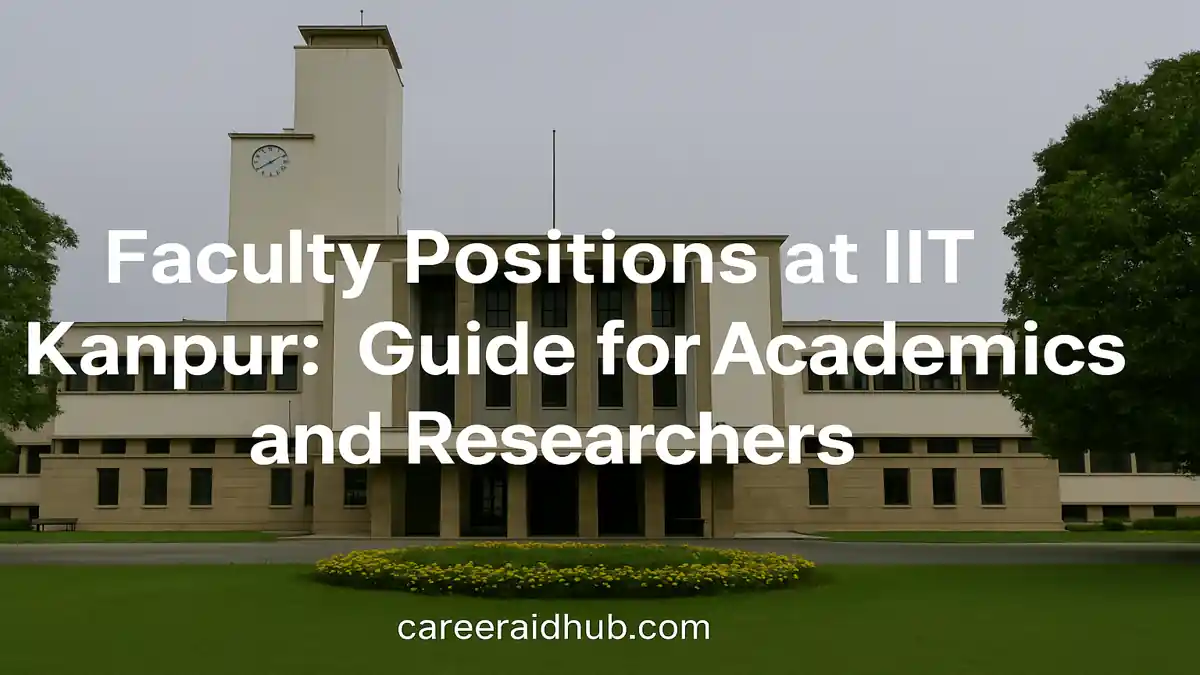Graduate School Scholarship Programme (GSSP) by DAAD: A Complete, Human‑Written
Guide for International Doctoral Candidates
Introduction: What GSSP Is—and why it matters
Germany’s research system is renowned for rigour, interdisciplinarity, and a culture of open collaboration. The Graduate School Scholarship Programme (GSSP)—funded by the German Academic Exchange Service (DAAD)—channels that strength into a single, compelling offer: multi‑year scholarships for international candidates who will pursue a structured doctorate within a German graduate school. The hallmark of GSSP is its two‑stage pathway: first an institutional nomination by an eligible graduate school or research training group, followed by a formal application in DAAD’s portal. This model ensures academic fit, cohesive supervision, and a supportive training environment from day one.
Ambitious international scholars can earn a fully funded pathway to a structured PhD in Germany through DAAD’s Graduate School Scholarship Programme (GSSP). With multi‑year support, mentoring, and research mobility, candidates join graduate schools that match their expertise while building globally relevant, high‑impact doctoral projects.
Program snapshot (at a glance)
-
-
Funding horizon: Up
to 48 months in total, typically awarded in annual tranches after satisfactory progress reviews. -
Coverage: Monthly scholarship, health/accident/liability insurance, travel support, and (where applicable) family or rent allowances; research/study subsidies may also be available.
-
Placement: Scholars are embedded in structured doctoral programs—graduate schools or research training groups—with coursework, methods training, cohort activities, and cross‑disciplinary seminars.
-
Core advantage: A single scheme that combines financial security, intellectual community, and international mobility.
-
Result: Instead of stitching together short grants and ad‑hoc supervisors, GSSP scholars develop a coherent research agenda within a well‑resourced academic home.
How GSSP is different from typical PhD funding
1) Structure first, then scholarship
Many scholarships fund individuals and leave the training model to chance. GSSP reverses the order: you join a program that has defined supervision frameworks, milestone checkpoints, and peer cohorts—and then the DAAD scholarship supports you inside that structure. Consequently, candidates enjoy clearer expectations and better mentoring.
2) A long runway for ambitious work
Complex questions—whether archival, computational, longitudinal, or lab‑based—rarely fit inside a single year. Because GSSP supports up to four years, you can design work packages that actually match the scale of your research problem rather than the length of a stipend.
3) Flexibility across disciplines
From biodiversity to digital governance, from life‑science engineering to data‑intensive methods, GSSP spans the sciences, social sciences, and humanities. As a
Benefits and financial support (explained carefully)
Monthly scholarship and stability
The monthly allowance is designed to cover living costs so you can keep your attention on research rather than side jobs. Because awards are typically confirmed annually, you gain predictability while still demonstrating academic progress.
Health, accident, and liability insurance
International scholars benefit from comprehensive protection. This coverage is crucial for visa requirements and day‑to‑day stability, especially in lab or fieldwork settings.
Mobility and research subsidies
Doctoral research often demands travel—conference presentations, archival visits, collaboration sprints, or field campaigns. GSSP includes travel support and may offer study/research subsidies that help pay for data acquisition, specialist training, or access fees.
Family and rent allowances (where applicable)
Because life circumstances vary, DAAD may provide family or rent supplements. These targeted supports reduce attrition and promote equity by recognising caregiving and housing costs.
Eligibility: who can apply—and who thrives
Academic foundation
Applicants typically hold a Master’s degree (or equivalent, e.g., Diplom) in a field aligned with the proposed doctoral topic. Strong applicants present evidence of research potential—methodological competence, prior publications or conference activity,
Residency requirement
GSSP is for international candidates who have not been resident in Germany for an extended period immediately prior to nomination. As a practical rule, long‑term prior residence weakens eligibility; candidates should verify the current residency threshold when planning.
Language expectations
Working language is set by the host program. Many graduate schools operate in English; others require German or a combination. Therefore, provide valid language proof where requested and plan early for any necessary upskilling.
Tip: If your field spans multiple methods (e.g., qualitative interviews plus computational modelling), explain how your language plan covers both research and everyday life.
The two‑stage application pathway (step‑by‑step)
Stage 1 — Institutional nomination
You first apply to a participating graduate school or research training group. Typical elements include:
-
-
A research statement that situates your topic within the program’s themes;
-
Academic records and a concise CV;
-
Writing sample or portfolio, if required by the field;
-
One or more interviews (live or virtual) focused on feasibility, originality, and supervision fit.
-
If selected, the program nominates you to DAAD. Nomination confirms two things: that your project aligns with the program’s expertise, and that the program is equipped to supervise and train you to completion.
Stage 2 — DAAD portal submission
After nomination, you submit a full application via the DAAD portal. Expect to provide:
-
-
A refined research proposal with objectives, methods, timeline, and risk‑mitigation;
-
Degree certificates and transcripts;
-
Letters of recommendation (check for DAAD templates);
-
Proof of language and identity documents.
-
Decisions are issued once DAAD completes its independent assessment.
Fields and host examples (illustrative, not exhaustive)
-
-
Life‑science engineering: Projects blending bioprocessing, materials, and medical technology in environments such as TU‑affiliated graduate schools.
-
Biodiversity and sustainability: Interdisciplinary centres that align ecology, data science, and policy studies.
-
Social sciences and digital society: Programs examining inequality, governance, public policy, and data‑driven social research.
-
Computational and data‑intensive fields: Graduate schools offering advanced analytics, HPC access, and research software engineering support.
-
The common thread is structured training: cohort seminars, methods clinics, transferable‑skills workshops, and formal milestone reviews.
Timeline planning: from exploration to decision
Because graduate schools run internal selection rounds, month‑specific windows vary by institution. Nevertheless, the following planning cadence is typical:
Research and program outreach (January–May)
-
-
Map your topic to 2–4 relevant graduate schools.
-
Contact potential supervisors with a crisp one‑page concept and short CV.
-
Request program handbooks and confirm GSSP participation.
-
Internal selection and nomination (June–September)
-
-
Submit the graduate school application, then prepare for interviews or task‑based evaluations.
-
If selected, secure the formal nomination and collect DAAD‑format recommendations.
-
DAAD portal submission and review (June–October)
-
-
Finalise the DAAD portal package within the program’s timeline.
-
Prepare for contingency options (e.g., deferrals or alternative funding) in case outcomes shift.
-
Expected decision window (rolling; often late autumn to early spring)
-
-
Programs notify candidates as DAAD decisions arrive.
-
Visa, relocation, and onboarding steps follow immediately.
-
Next cycle (prediction): Expect similar months in the following year—internal calls clustering around January–May, nominations by late summer, and DAAD portal windows across mid‑year to early autumn; we will update soon.
How to write a credible GSSP research proposal (with sub‑sections)
1) Problem framing and originality
Open with the gap your project addresses and why it matters now. Situate your work within current literature and practice; then articulate the specific advance your study promises.
2) Methods and feasibility
Outline data, instruments, field sites, or corpora. Explain analytical pipelines, from pre‑processing to validation. Where risk exists (e.g., rare data access, participant recruitment), include fallback plans that still generate publishable insights.
3) Work packages and timeline
Divide the project into phases (e.g., setup, data collection, analysis, writing). For each phase, list outputs—pilot results, datasets, preprints, conference submissions, or protocols.
4) Training and supervision plan
Describe how the graduate school’s modules and facilities build the skills you need (e.g., mixed‑methods, coding, statistics, lab techniques). Show you understand the supervisory structure (primary supervisor plus committee).
5) Impact and dissemination
Explain both academic and societal benefits. Identify target journals, communities of practice, and open‑science commitments (data/code sharing, preprints, licenses).
Practical documents checklist (micro‑guide)
-
-
Valid passport and CV (include DOIs or URLs for outputs).
-
Degree transcripts and official certificates.
-
A polished research proposal (5–10 pages is common; confirm program limits).
-
Language proof (English/German, as required).
-
Recommendation letters—ask early and share your draft proposal so referees can be specific.
-
Any ethics or data approvals needed for early work.
-
Common pitfalls—and how to avoid them
-
-
Misalignment with program themes: Tailor your topic to the graduate school’s focus; generic proposals feel weak.
-
Over‑promising timelines: Ambition is good; plausibility is better.
-
Neglecting methods depth: Novel questions still need robust methodology.
-
Late outreach to supervisors: Build relationships early; good mentoring starts before the application.
-
Review & update cadence (to keep this page fresh)
-
-
Quarterly content audit: September, December, March, June.
-
Fast‑track updates: Within five working days of any official DAAD change affecting benefits, eligibility, or nomination windows.
-
Next scheduled review: September—to align predicted months for the upcoming cycle; we will update soon.
-
Feature Details (for quick reference)
| Feature | Details |
|---|---|
| Program Name | Graduate School Scholarship Programme (GSSP) |
| Host Country | Germany |
| Funded By | German Academic Exchange Service (DAAD) |
| Duration | Up to 48 months (awarded in annual tranches) |
| Study Mode | Full‑time, on‑site within a German graduate school or research training group |
| Eligibility | International applicants with a completed Master’s (or equivalent), strong research fit, and acceptable prior residence outside Germany |
| Financial Support | Monthly scholarship, insurance (health/accident/liability), travel allowances, study/research subsidies, and where applicable family or rent supplements |
| Fields of Study | All disciplines hosted by participating graduate schools (STEM, social sciences, humanities, and interdisciplinary areas) |
| Deadline | Institution‑specific. Typical nomination/application months: January–October; next cycle expected to follow similar months next year—we will update soon |
| Official Website | Click Here |
Conclusion: What to do next—and why acting early pays off
For international candidates seeking an integrated doctoral journey—funding, mentoring, and a structured cohort—the DAAD Graduate School Scholarship Programme (GSSP) is a standout option. Begin by mapping your project to suitable graduate schools, initiate supervisor conversations early, and prepare a proposal that balances ambition with methodological clarity. With planning and persistence, your application can translate into four years of sustained, well‑supported research within a world‑class academic ecosystem.
References (official)
-
-
DAAD—Graduate School Scholarship Programme (overview for institutions)
Frequently Asked Questions (FAQs)
You must first be nominated by a participating graduate school, then submit your complete application through the DAAD online portal.
International applicants with a completed Master’s degree, strong research fit, and limited prior residence in Germany can apply through nominated graduate schools.
Yes, it provides a monthly stipend, health insurance, and potential rent or family allowances to cover essential living costs during your PhD.
Yes, GSSP supports all academic disciplines, but you must align your research proposal with the graduate school’s thematic focus.
The scholarship can fund up to 48 months of full-time doctoral research, subject to annual progress reviews.
Common requirements include a research proposal, degree certificates, transcripts, CV, language proof, and recommendation letters on DAAD templates.
Not always. Many programs are in English, but some require German. Check the language requirements of your chosen graduate school.
Start at least 6–9 months before deadlines to identify programs, contact supervisors, and refine your proposal.
No, you must first secure a nomination from a participating graduate school before accessing the DAAD application process.
It is highly competitive due to limited slots, so strong academic credentials and a well-aligned research proposal are essential.
Premium Mentorship for a Stronger Application
- Premium Mentorship: personalised 1:1 guidance for this and similar opportunities
- In-depth review of your CV, academic profile, and key statements
- Aligned with international selection criteria so your profile matches what panels expect
- Stronger, more compelling narrative for highly competitive calls
- Step-by-step support from opportunity mapping to final submission (fee-based)










